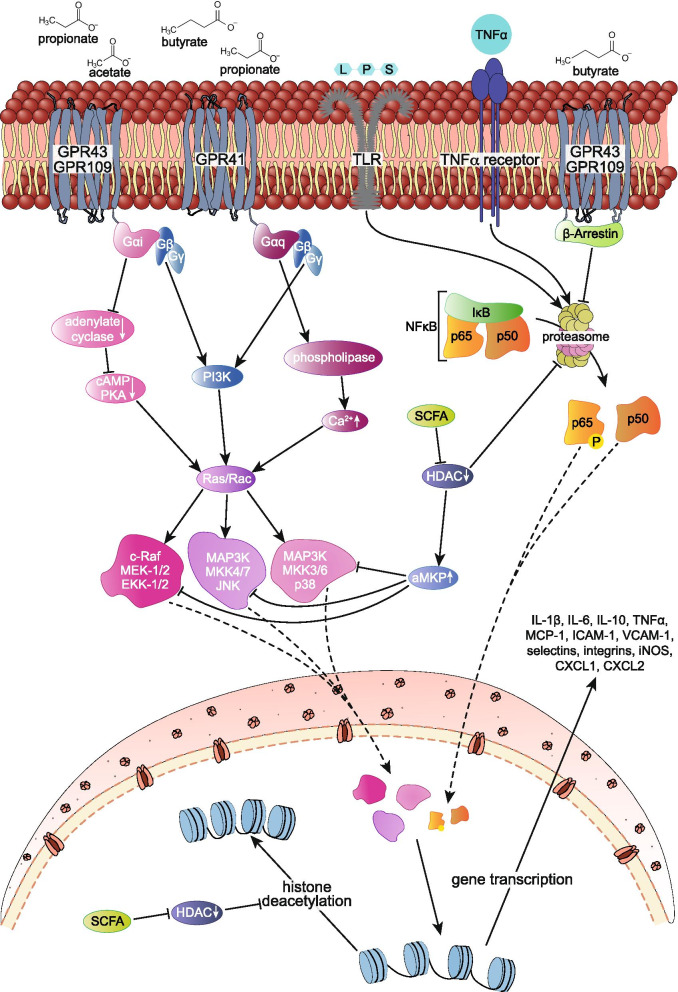Fig. 2.
Overview on the effect of SCFAs, LPS, and TNFα on gene transcription of inflammatory cytokines and adhesion factors involved in immune cell activation and promotion of endothelial dysfunction. LPS and TNFα bind to their receptor and activate downstream MAPK and NF-κB signaling through phosphorylation and subsequent ubiquitination of I-κB (inhibitory subunit of NF-κB) resulting in its degradation thus inducing gene transcription of pro-inflammatory molecules. SCFA pleotropic effects on inflammation are mediated through binding of extracellular G protein-coupled receptors as well as its potential to inhibit histone deacetylation. Acetate and propionate primarily bind to FFA2-R/GPR43 which are expressed on immune cells and may inhibit proteasomal degradation of I-κB via β-arrestin attenuating NF-κB response. Additionally, contrary effects of FFA2-R/GPR43 activation are shown as SCFA binding initiates downstream MAPK signaling. SCFA butyrate dictates activation of G protein-coupled receptor FFA3-R/GPR41 and GPR109 which decreases LPS-induced expression of TNFα, MCP-1, IL-6, and inducible nitric oxide synthase (iNOS). Confliction to its anti-inflammatory effect butyrate is also shown to enhance MAPK signaling via its binding to extracellular G protein-coupled receptor FFA3-R/GPR41. Despite receptor signaling, SCFAs are potential non-competitive inhibitors of histone deacetylases (HDACs). These enzymes facilitate a decrease in the interaction of histones to the DNA, hence promoting gene transcription. Furthermore, HDAC enhances acetylation status and thus inhibitory interaction potential of MKP-1 to MAPK and in this way attenuates downstream pro-inflammatory gene transcription. Lastly, SCFAs may decrease proteasome activity through HDAC and inhibit TNFα-induced NF-κB activation normally mediated by the degradation of I-κB. GPR G protein-coupled receptor, LPS lipopolysaccharides, TNFa tumor necrosis factor a, cAMP cyclic adenosine monophosphate, PKA protein kinase A, PI3K phosphoinostide 3-kinase, MAPK mitogen-activated protein kinase, MEK mitogen-activated protein kinase kinase, aMKP acetylated mitogen-activated protein kinase phosphatase, HDAC histone deacetylase, NF-κB nuclear factor kappa-light-chain-enhancer of activated B cells, I-κB inhibitor of nuclear factor kappa B, MCP-1 monocyte chemoattractant protein-1, ICAM intercellular adhesion molecule, VCAM vascular adhesion molecule, iNOS inducible nitric oxide synthase, CXCL chemokine ligand

